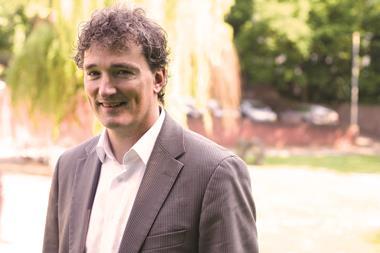EUROPE – High yield is increasingly looked at as a strategic asset class, according to UBP.
Before becoming a major asset class, high yield used to be mainly part of tactical asset allocation only, Olivier Debat, director and investment specialist at UBP, told IPE.
He said: “At around 450 basis points, US and European high yield spreads are now attractive. High yield as an asset class will boost the returns achieved in fixed income – US spreads, for example, are compensating investors for a default rate of nearly 6%, although historical fault rates stand at 4% – while at the same time limiting volatility with regard to equity. Investors want high yield without the duration risk.”
Debat added that the current macro-economic environment was supportive for high yield.
He expects low and stable growth in the European and US economy but warns that growth will be lower than it has been in the past.
“If macro-economic conditions improve, this is supportive for corporate profits, and if the improvement is insufficient, the Fed still has the option to maintain QE for an extended period of time,” he said.
“Both scenarios are positive for high yield, which enjoys strong fundamentals.”
Debat also pointed out that high-yield CDS indices were more liquid and profitable to investors than high-yield cash bonds, although the liquidity of the high-yield cash market has been receding since 2006.
“Bonds are usually issued with a call,” he said.
“In CDS, investors do not have a call risk – instead they enjoy a yield pick-up.”
Debat also sees institutional appetite for convertibles.
Meanwhile, Patrice Gautry, UBP’s chief economist listed five crucial steps in the revival of the European economy.
First, if budgetary policymakers loosen their austerity, they can make some room for growth to take hold, provided this is combined with structural reforms, a sharp fall in long rates and the prospect of budget harmonisation, he said.
Second, the current debate on taxation will most likely force Europe’s governments to consider some “more daring” reforms, which would be positive for the region in the long term.
Third, with the US regaining competitiveness through its newfound shift towards energy independence, the future of Europe depends more than ever on its re-industrialisation.
Reforms, resulting in lower labour costs and higher productivity, have already enabled some countries to regain market share, Gautry said.
Fourth, combining this rebound in productivity with a comprehensive economic policy for an integrated region should allow the euro-zone to avoid a Japanese-style lost decade and the threat of deflation.
And fifth, the ECB is taking a more aggressive stance. What is needed now, according to Gautry, is new lending stimulus, which would encourage demand and further cut refinancing costs, thereby reducing the debt service burden for all economic actors.
“Perhaps it is time to reassess our view of Europe and adopt a more positive outlook,” he added.
“Because, even though credit is still frozen in the euro-zone, the reforms implemented since 2008 and the determination shown by some governments – especially in the periphery – are paving the way out of the recession and towards a rebuilding of Europe.”















No comments yet